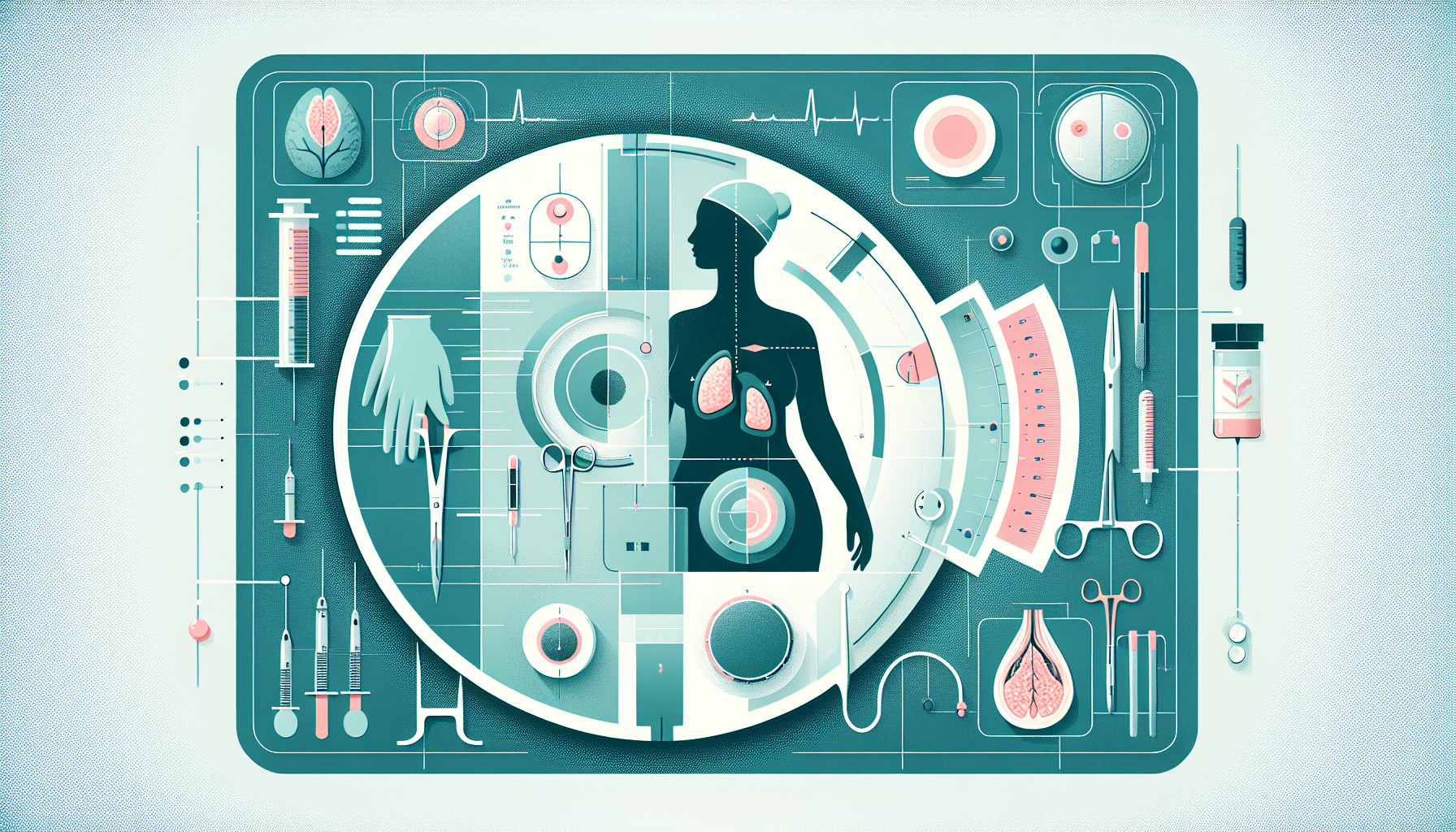Our Summary
The paper discusses the use of acellular dermal matrix (ADM) in breast reconstruction surgeries, especially after mastectomies where the skin and nipple are preserved. ADM, a type of graft made from skin tissue that has had all the cells removed, is useful because it strengthens the tissue and helps shape the breast without putting pressure on the muscles underneath. The authors prefer using a specific type of ADM, called “Strattice®”, to cover the lower part of the breast implant, as it is cost-effective and versatile.
The success of using ADM in breast reconstruction depends on choosing the right patients, ensuring that the grafted tissue has a good blood supply, and properly managing the patient after surgery. It can be tricky to use ADM in patients with large or sagging breasts, as there might be issues with poor blood supply to the grafted tissue and the nipple.
However, these challenges can be managed by carefully selecting patients and managing the position and grafting of the nipple. Traditional methods usually involve reducing the size of the breast to get the desired look in one surgery. Therefore, plastic surgeons need to be ready to use new methods for breast reconstruction after a mastectomy, and ADM is a great option for this.
FAQs
- What is acellular dermal matrix (ADM) and why is it used in breast reconstruction surgeries?
- What is the significance of the Strattice® type of ADM in breast reconstruction surgeries?
- What are the potential challenges of using ADM in breast reconstruction, particularly in patients with large or sagging breasts?
Doctor’s Tip
One helpful tip a doctor might tell a patient about mastectomy is to discuss the option of using acellular dermal matrix (ADM) in their breast reconstruction surgery. ADM can help strengthen the tissue and shape the breast without putting pressure on the muscles underneath. It is important for patients to discuss this option with their surgeon and determine if it is the right choice for their individual situation. Additionally, following proper post-operative care instructions and monitoring the healing process closely can help ensure a successful outcome.
Suitable For
Patients who are typically recommended for mastectomy include those with a high risk of developing breast cancer due to genetic mutations (such as BRCA1 or BRCA2), a strong family history of breast cancer, or a previous history of breast cancer. Additionally, patients with large or multiple tumors in the breast, tumors that are close to the chest wall, or inflammatory breast cancer may also be recommended for mastectomy. Patients who have had previous radiation therapy to the breast may also be recommended for mastectomy, as radiation can make breast-conserving surgery more difficult. Ultimately, the decision to undergo a mastectomy is a personal one that should be made in consultation with a healthcare provider.
Timeline
Before mastectomy:
- Patient receives a diagnosis of breast cancer and discusses treatment options with their healthcare team.
- Patient undergoes various tests and consultations to determine the best course of action, which may include a mastectomy.
- Patient prepares for surgery by discussing the procedure with their surgeon, making arrangements for post-operative care, and mentally preparing for the changes to their body.
After mastectomy:
- Patient undergoes the mastectomy surgery, during which the breast tissue is removed.
- Patient may experience physical and emotional changes as a result of the surgery, including pain, swelling, and feelings of loss or grief.
- Patient begins the healing process, which may involve wearing compression garments, taking pain medication, and attending follow-up appointments with their healthcare team.
- Patient discusses options for breast reconstruction with their surgeon, which may include the use of ADM.
- If ADM is chosen, the patient undergoes the reconstruction surgery, during which the graft is placed to help shape the breast and provide support for the implant.
- Patient continues to follow up with their healthcare team to monitor the healing process and address any concerns or complications that may arise.
What to Ask Your Doctor
- What are the potential risks and complications associated with using ADM in breast reconstruction after a mastectomy?
- How will the use of ADM affect the appearance and feel of my reconstructed breast?
- What is the success rate of using ADM in breast reconstruction surgeries?
- Are there any specific criteria that make a patient a good candidate for using ADM in breast reconstruction?
- How long is the recovery process after using ADM in breast reconstruction?
- Will I need additional surgeries or procedures after using ADM in breast reconstruction?
- How long will the results of using ADM in breast reconstruction last?
- Are there any alternative options to using ADM in breast reconstruction that I should consider?
- How will using ADM in breast reconstruction affect my ability to undergo future breast cancer screenings?
- What is the cost associated with using ADM in breast reconstruction, and will it be covered by insurance?
Reference
Authors: Ribeiro RC, Arduini ABS, Córdova LF, de Carvalho FM. Journal: Aesthetic Plast Surg. 2020 Jun;44(3):673-676. doi: 10.1007/s00266-020-01709-y. Epub 2020 Apr 16. PMID: 32300878
